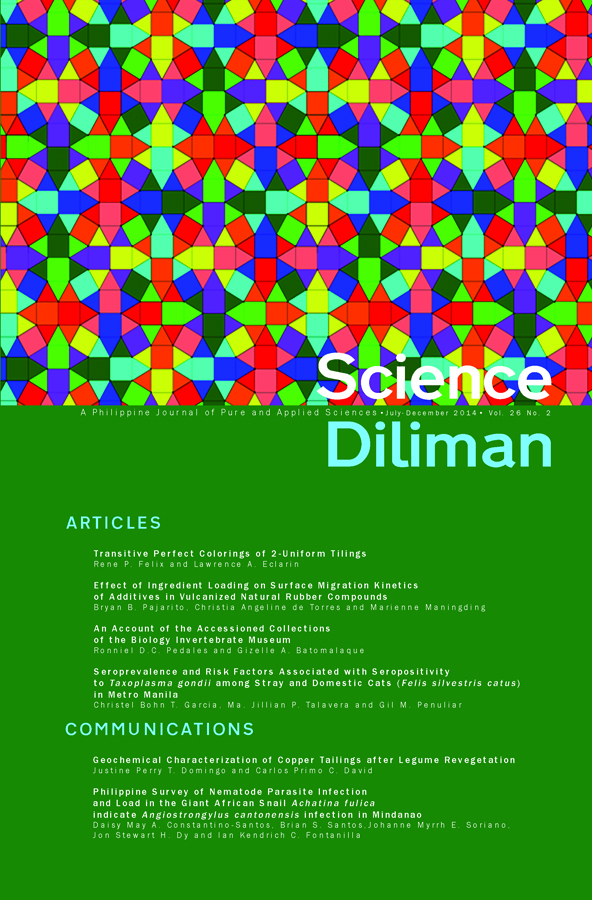Effect of Ingredient Loading on Surface Migration Kinetics of Additives in Vulcanized Natural Rubber Compounds
Abstract
Surface migration kinetics of chemical additives in vulcanized natural rubber compounds were studied as function of ingredient loading. Rubber sheets were compounded according to a 212-8 fractional factorial design of experiment, where ingredients were treated as factors varied at two levels of loading. Amount of migrated additives in surface of rubber sheets was monitored through time at ambient conditions. The maximum amount and estimated rate of additive migration were determined from weight loss kinetic curves. Attenuated total reflection–Fourier transform infrared (ATR-FTIR) spectroscopy and optical microscopy were used to characterize the chemical structure and surface morphology of sheet specimens during additive migration. ANOVA results showed that increased loading of reclaimed rubber, CaCO3, and paraffin wax signif icantly decreased the maximum amount of additive migration; by contrast, increased loading of used oil, asphalt, and mercaptobenzothiazole disulphide (MBTS) increased the maximum amount. Increased loading of sulfur, diphenylguanidine (DPG), and paraffin wax significantly decreased the additive migration rate; increased loading of used oil, asphalt, and stearic acid elicited an opposite effect. Comparison of ATRFTIR spectra of migrated and cleaned rubber surfaces showed signif icant variation in intensity of specif ic absorbance bands that are also present in infrared spectra of migrating chemicals. Paraffin wax, used oil, stearic acid, MBTS, asphalt, and zinc stearate were identified to bloom and bleed in the rubber sheets. Optical micrographs of migrated rubber surfaces revealed formation of white precipitates due to blooming and of semi-transparent wet patches due to bleeding.
Keywords: Rubber, migration, blooming, bleeding, vulcanizate, ingredient loading



